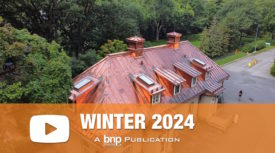Sustainability
Meeting Sustainability Goals by Designing High-Performance Building Envelopes
A Q&A with PIMA President Justin Koscher
November 7, 2023
Enhance your expertise with unparalleled insights.
Join thousands of building professionals today. Shouldn’t you know what they know?
SUBSCRIBE TODAY!Copyright ©2024. All Rights Reserved BNP Media.
Design, CMS, Hosting & Web Development :: ePublishing
.jpg?height=168&t=1711279082&width=275)








.jpg?height=168&t=1703026308&width=275)


